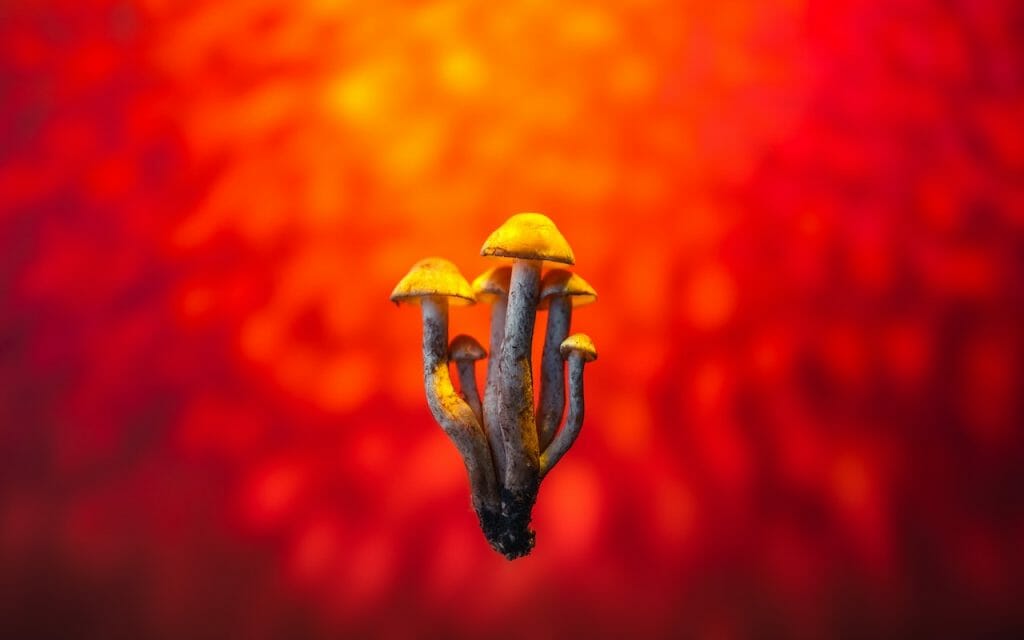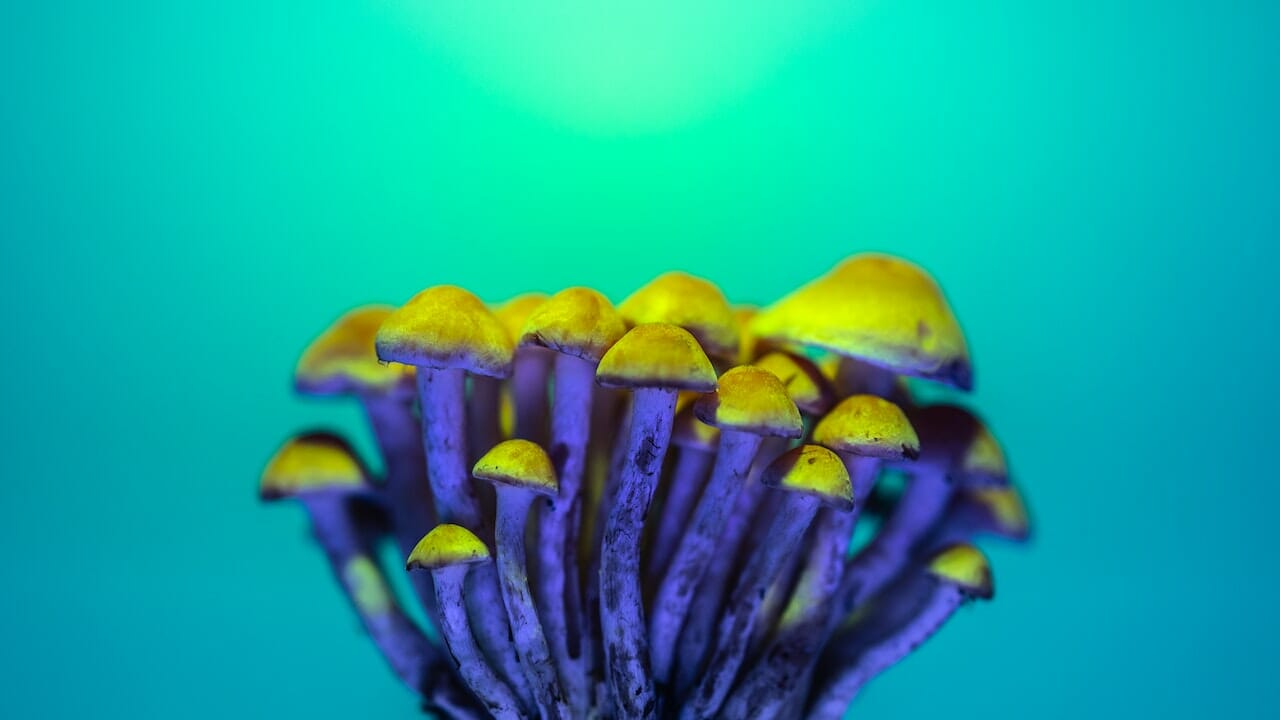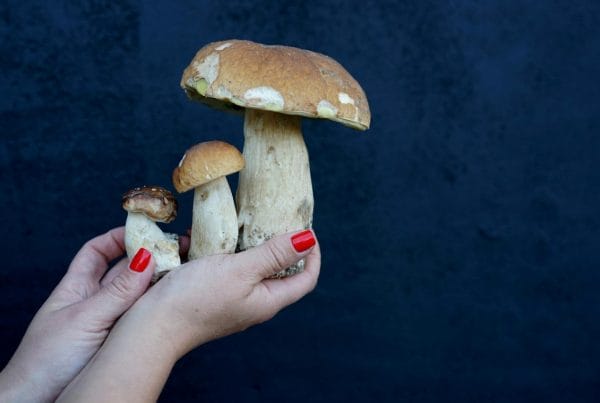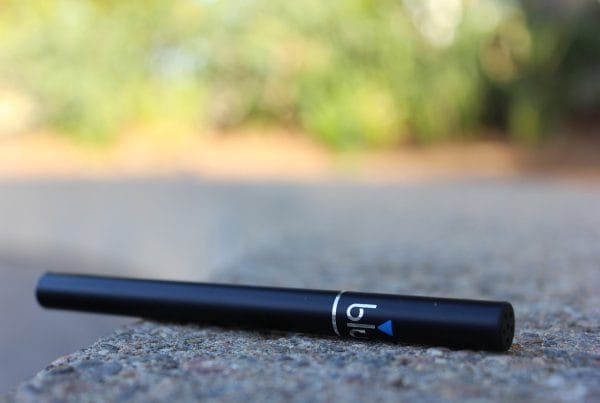Lysergic Acid Diethylamide (LSD) is a powerful hallucinogen that has been thoroughly researched in the world of psychedelic substances. Originally known mainly for recreational purposes, perceptions of LSD have shifted, viewing it as a psychoactive compound with potential mental health benefits. This has paved the way for more research on LSD, particularly in more accessible forms like LSD edibles.
Key Insights:
- LSD, a strong hallucinogen, originates from the ergot fungus.
- LSD shares similarities with psilocybin and interacts with 5-HT2A receptors.
- Known effects of LSD include visual alterations, mood changes, ego dissolution, and pseudo-hallucinations.

Deciphering LSD
LSD is an extremely powerful hallucinogen that can drastically modify a person’s perception of reality and significantly distort their senses. LSD is sourced from “ergot“, a type of fungus found on rye and other grains.
At the molecular level, LSD is a complex chemical that belongs to the ergoline family. It comprises a bicyclic hexahydroindole group and a bicyclic quinoline group (lysergic acid). The name ‘Lysergic Acid Diethylamide’ is derived from the functional group attached to its core. LSD’s structure resembles other ergoline alkaloids, such as ergotamine, which is present in the ergot fungus Claviceps purpurea, and the neurotransmitter serotonin.
The Effects of LSD
Upon consumption, LSD penetrates the brain and stimulates chemical reactions that can persist for several hours. LSD can induce the following short-term effects:
- Unforeseen mood swings
- Distorted perception
- Feeling of dizziness
- Decreased appetite
- Impaired motor control
The Advantages What are the Benefits of Using LSD?
The benefits of LSD are diverse and largely hinge on the amount consumed. Most scientific studies concentrate on exploring the advantages associated with lower doses of this psychedelic substance. In the following sections, we delve into the potential positive outcomes of LSD use.
Pain Relief and Neural Growth
Researchers at Maastricht University discovered that a single microdose of LSD can induce pain-alleviating effects that persist for a minimum of five hours, if not longer.
In a Cold Pressor Test, participants are asked to immerse their hands in 3°C (37.4°F) water for as long as possible. Those who had consumed 20 mg of LSD were able to keep their hands submerged for 20% longer compared to participants who did not. They also reported experiencing less pain and discomfort.
In addition, LSD plays a role in the development and growth of the 86 billion neurons present in our brain. Moderate doses of LSD, typically between 5 to 20 ug, increase levels of BDNF in blood plasma. This is crucial as mood disorders, such as depression, often related to neuroplasticity problems, could potentially be mitigated by the positive impact of LSD on neural health.
Improvement of Mental Health
Dr. Robin Carhart-Harris from Imperial College London proposed the entropic brain hypothesis, suggesting that mental health disorders could be attributed to rigid thought patterns, perpetuated by an overly active default mode network (DMN). Psychedelic substances, such as LSD, can interfere with the DMN, augment brain entropy, and aid in dismantling negative neural pathways while promoting the creation of positive ones.
One study involving over 1,000 individuals microdosing showed a reduction in depression. Another extensive cross-sectional study indicated a decrease in negative moods and detrimental attitudes, coupled with an increase in open-mindedness and cognitive abilities.
Addiction Treatment
A meta-analysis of randomized-controlled clinical trials using LSD in psychiatry revealed that it is most effective in treating alcohol dependency. This conclusion is further corroborated by the positive results reported by numerous patients treated for alcoholism by Humphrey Osmond and at the Spring Grove Hospital Centre during the 1950s and 1960s.
Easing End-of-Life Anxiety and Depression
Dr. Peter Gasser’s research reveals that LSD-assisted psychotherapy can significantly reduce anxiety related to end-of-life in terminally ill cancer patients, and improve their subjective quality of life. A Phase 2 trial is currently underway to further explore the potential of LSD therapy in treating depression.
Deciphering LSD Edibles: Composition and Manufacturing Method
LSD edibles are food and beverage products infused with the hallucinogenic compound, LSD. These edibles come in a variety of forms such as chocolates, candies, baked goods, and even unique offerings like LSD mints.
Inside Look
- LSD: This active compound induces hallucinogenic effects. Its dosage is carefully calculated and incorporated into the edible.
- Edible Base: The LSD is usually dissolved or infused into a consumable medium like a gummy, candy, sugar cube, or other ingestible items. These mediums act as the delivery system for the hallucinogenic compound.
- Flavouring and Ingredients: Depending on the specific edible product, flavourings, sweeteners, and other ingredients are added to enhance taste and texture. These can include natural or synthetic flavourings, colours, and sugars, which can differ significantly.
Manufacturing Steps:
- LSD Synthesis: The first step is the chemical synthesis of LSD. This procedure requires a deep understanding of organic chemistry and access to the necessary chemicals, equipment, and a laboratory setting.
- Liquid Formulation: Once LSD is synthesized, it is usually transformed into a liquid form by dissolving it in a solvent, creating a concentrated LSD solution.
- Infusion: The liquid LSD is then infused into an edible medium such as gummy candies, sugar cubes, or blotter paper. The medium absorbs the liquid, allowing the LSD to be consumed orally.
Immersing in the Psychedelic Effects of Psychoactive Compounds in LSD Edibles
LSD triggers intense visual effects. Colours appear more vivid, objects may seem to glow with halos or rainbows, and shapes can alter. Regardless of whether the user’s eyes are open or closed, they may visualize complex geometric patterns and imagery.
LSD allows for a change in the perception of oneself and the environment. It can trigger various mental conditions where thoughts may appear clear and meaningful, or conversely, may lack logical sense. Other possible effects include alterations in the perception of time, space, and self-image. The boundary between self and the external world may appear fuzzy. Some users report experiencing sensory fusion, such as visually sensing music or hearing colours.
Suggested LSD Products
There’s an extensive range of LSD edibles available, but it’s vital to buy from a trustworthy source. You must verify that the edibles you purchase contain LSD and not other substances like PCP, ecstasy, or ketamine.
Deadhead Chemist – LSD Infused Gummies
Deadhead Chemist offers LSD-infused gummies, each containing 100 micrograms (ug) of LSD, in various flavours. Each package contains one gummy which has shown promise in aiding individuals with conditions like obsessive-compulsive disorder (OCD), post-traumatic stress disorder (PTSD), alcohol dependency, depression, and cluster headaches.
Deadhead Chemist – Mint Tea
Deadhead Chemist’s raspberry mint tea provides a tastier and more flavourful way to enjoy the effects of LSD. LSD and other psychedelics mimic the serotonin neurotransmitter and heighten the brain’s flow state.
Earthly Delights – Candy Flips
Candy flipping became popular during the late 1980s rave culture. These days, thrill-seekers and party-goers continue to enjoy the combination of these two amazing substances. Users frequently experience deep emotions of love and interconnectedness, accompanied by stunning visual effects like colour enhancement, object morphing, and complex geometric patterns.
Concluding Remarks
LSD has a long-standing reputation for evoking transformative experiences. With the growth of scientific understanding, its popularity has escalated, and the advent of LSD edibles provides a fresh opportunity for users. These delectable delights have emerged as a
Safe and enjoyable method for experimenting with LSD through controlled dosage.
As Canada’s leading distributor of superior quality online shrooms, Magic Mushroom Delivery Canada boasts an extensive array of LSD-infused edibles and cannabis products. Peruse our selection at your own pace, add your chosen products to your cart, and unwind at home as we handle the delivery. We also offer an assorted array of psilocybin shrooms, edibles, beverages, and capsules for your convenience. Don’t miss out on our LSD delivery page for additional details!
Frequently Asked Questions
What sets LSD apart from psilocybin?
FEATURES LSD PSILOCYBIN Source Semi-synthetic chemical compound Naturally found in fungi Available Forms Tabs, microdots, liquid, gummies, blotter paper Dried mushrooms, capsules, teas, chocolates Potency Highly potent, microgram doses (ug) Varies based on mushroom species and preparation Onset and Duration Quick onset (15-60 minutes), short duration (3-5 hours) Gradual onset (30-60 minutes), moderate duration (4-6 hours)
What precautions can be taken to avoid unpleasant LSD experiences?
- Choose Your Surroundings Wisely
- Prepare Your Mental State
- Start with a Minimal Dose
- Arrange for a Trip Supervisor
- Create a Soothing Environment
- Practice Deep Breathing and Grounding Techniques
- Accept and Release
How long do the effects last?
The impact of the acid begins to show between 30-60 minutes post consumption. Those who are more sensitive to psychedelics may start to feel the effects In as little as 15 minutes, you might start to feel the effects. About an hour in, you’ll be able to confirm if you’ve taken LSD. The peak of your trip will occur roughly three hours into the experience. Time may appear to decelerate, and hallucinations may occur.
Don’t worry, feeling detached from reality during this phase is not unusual. The peak phase typically lasts between 3 and 5 hours, followed by the offset phase, which extends for another 3 to 5 hours.
How does LSD interact with the human body?
LSD primarily engages with the brain’s serotonin system, binding to and stimulating the 5-HT2A receptor. This interaction sets off a chain of neurochemical and physiological responses. The effects of LSD can vary widely and are influenced by certain factors.
Does LSD come in forms other than edibles?
Yes. LSD is available in various forms. The four main types of LSD products are blotter paper, liquid solutions, tablets/microdots, and gelatin sheets.
Suggested Readings:
| FEATURES | LSD | PSILOCYBIN |
| Source | Semi-synthetic chemical compound | Naturally found in fungi |
| Available Forms | Tabs, microdots, liquid, gummies, blotter paper | Dried mushrooms, capsules, teas, chocolates |
| Potency | Highly potent, microgram doses (ug) | Varies based on mushroom species and preparation |
| Onset and Duration | Quick onset (15-60 minutes), short duration (3-5 hours) | Gradual onset (30-60 minutes), moderate duration (4-6 hours) |





